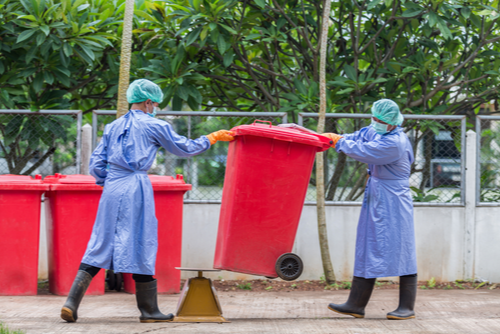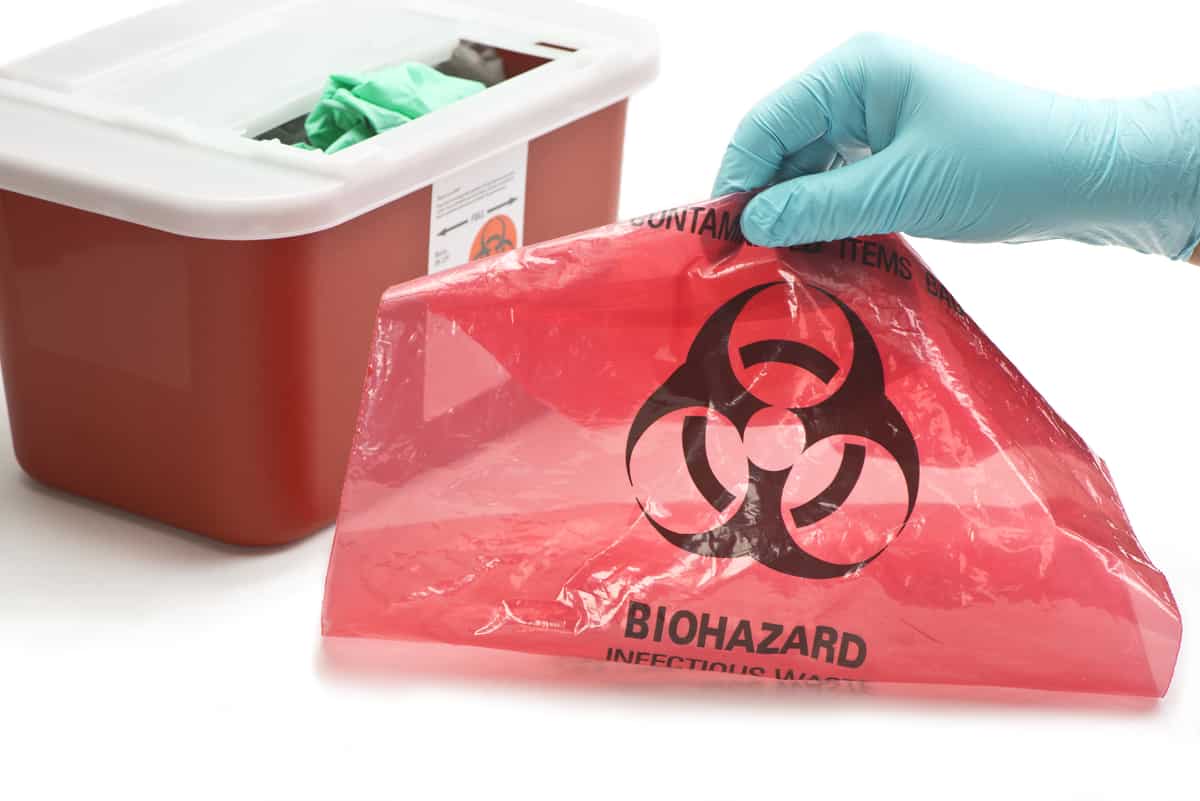Past Cleaning: Ensuring Safety And Security with Expert Medical Waste Removal
Wiki Article
Keep Ahead of Regulations: Professional Recommendations on Medical Waste Disposal
In a globe where the healthcare sector is constantly developing, it is important for clinical centers to remain in advance of regulations when it pertains to the correct disposal of clinical waste. With stringent guidelines and frequent regulative modifications, it can be testing to browse the intricacies of this procedure. Nonetheless, with expert guidance, facilities can guarantee compliance and alleviate threats related to inappropriate garbage disposal. From recognizing the various groups of clinical waste to applying the appropriate collection and partition approaches, this conversation will certainly give beneficial insights and actionable tips to assist facilities remain in advance of guidelines in the ever-changing landscape of medical waste disposal.Understanding Clinical Waste Categories
Comprehending clinical waste classifications is important for correct disposal and administration in healthcare centers. Medical waste describes any waste produced by healthcare tasks that may posture a danger to public health and wellness or the setting. It is important to classify medical waste properly to ensure its safe handling, disposal, treatment, and transportation.There are a number of categories of medical waste that health care centers need to be acquainted with. The most typical groups include contagious waste, pathological waste, sharps waste, pharmaceutical waste, and chemical waste. Each category has details guidelines and guidelines for its correct management and disposal.
Pathological waste refers to human tissues, organs, or body parts that require unique handling and disposal. Drug waste consists of run out, extra, or polluted medications that need careful handling and disposal.
Staying Up-To-Date With Regulatory Changes
Remaining existing with governing adjustments is crucial for medical care centers to make certain conformity and appropriate administration of clinical garbage disposal. medical waste removal services. With guidelines continuously developing, it is important for healthcare centers to remain up-to-date to avoid fines, fines, and potential injury to the atmosphere and public health and wellnessTo stay in advance of regulative changes, medical care facilities should develop a system for tracking and tracking updates. This can be done by registering for regulative newsletters, participating in seminars and workshops, and proactively taking part in sector organizations. Additionally, centers ought to mark a personnel or team in charge of staying educated and distributing details to appropriate stakeholders.
Regular communication with governing companies is additionally essential. Medical care facilities must establish connections with neighborhood, state, and federal firms to ensure they know any adjustments in policies that might influence their waste administration techniques. This can be done through routine conferences, participation in public comment durations, and proactive interaction with governing agencies.
Additionally, healthcare centers ought to take into consideration partnering with waste administration companies that concentrate on medical garbage disposal (medical waste disposal services with WasteX). These firms are often skilled in the most recent regulations and can give assistance and support to make sure conformity
Implementing Appropriate Collection and Segregation Techniques
To properly take care of medical waste disposal, healthcare facilities should establish appropriate collection and segregation techniques based on governing guidelines. Executing these methods guarantees the risk-free handling and disposal of possibly unsafe products, shields the setting, and decreases the threat of infections and injuries to healthcare employees and the basic public.
Correct collection and partition approaches entail the usage of assigned containers and identifying systems. Health care facilities ought to offer clearly labeled containers for various sorts of clinical waste, such as sharps, contagious waste, pharmaceutical waste, and non-hazardous waste. These containers must be color-coded and clearly marked to stay clear of complication and advertise simple recognition.
click here now Furthermore, healthcare facilities need to educate their team on the right procedures for collecting and segregating clinical waste. This includes educating them on the various kinds of waste, the ideal containers to make use of, and the relevance of adhering to regulations and standards. Routine training sessions and refresher courses need to be carried out to make sure that personnel stay up-to-date on ideal methods.
Additionally, medical care centers ought to establish a system for normal collection and disposal of clinical waste. This may involve partnering with qualified waste monitoring companies that concentrate on medical garbage disposal. These business will certainly guarantee that the accumulated waste is moved and thrown away in compliance with governing requirements.
Selecting the Right Disposal Methods

Incineration is one of the most efficient and usual approaches for getting rid of particular kinds of medical waste, such as pathological waste and sharps. It involves the controlled combustion of waste at heats, minimizing it to ash. Incineration can release hazardous contaminants into the air and contribute to air pollution.

Other disposal methods consist of chemical treatment, microwave therapy, and landfilling. Chemical treatment entails using chemicals to neutralize the waste and decontaminate. Microwave treatment uses microwave power to heat and decontaminate the waste. Landfilling includes hiding the waste in an assigned landfill area (medical waste disposal services with WasteX). Landfilling ought to be the last hotel due to the possible threat of contamination to soil and groundwater.
Making Sure Conformity Via Documentation and Training
After thoroughly thinking about the proper disposal approaches for clinical waste, medical care centers have to ensure conformity with regulations and minimize environmental effect by applying reliable documents and training treatments. This action is critical in keeping a sustainable and safe environment for both healthcare employees and the public.
Healthcare workers who deal with medical waste must obtain appropriate training on waste segregation, handling, and disposal procedures. By offering extensive training, health care facilities can equip their team to make enlightened choices and decrease the threat of improper waste disposal.
Conclusion
In conclusion, staying ahead of guidelines in clinical garbage disposal is essential for health care facilities. medical waste removal near me. Recognizing the various classifications of medical waste, staying upgraded with governing modifications, executing proper collection and segregation approaches, picking the proper disposal methods, and ensuring conformity with paperwork and training are all important steps. By adhering to these guidelines, healthcare organizations can efficiently manage and get rid of of visit the site clinical waste in a secure and accountable wayFrom understanding the various classifications of medical waste to applying the ideal collection and segregation approaches, this discussion will certainly supply important insights and workable tips to assist facilities stay in advance of guidelines in the ever-changing landscape of medical waste disposal. - medical waste disposal services with WasteX
The most usual categories include transmittable waste, pathological waste, sharps waste, pharmaceutical waste, and chemical waste. Healthcare facilities must give clearly identified containers for different kinds of clinical waste, such as sharps, transmittable waste, pharmaceutical waste, and non-hazardous waste. Healthcare facilities ought to establish a thorough system to record and track all aspects of medical waste disposal, consisting of kinds of waste created, quantities, and disposal methods used. Health care workers that handle medical waste ought to get suitable training on waste segregation, managing, and disposal procedures.
Report this wiki page